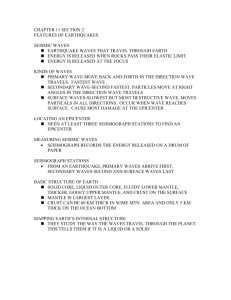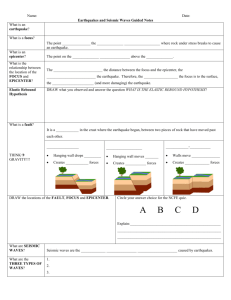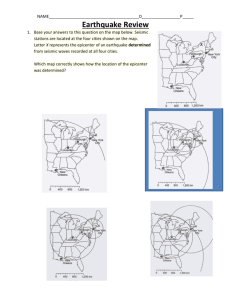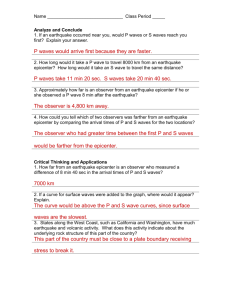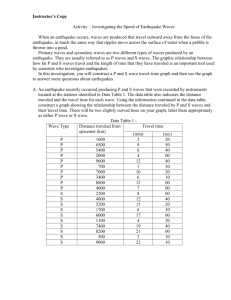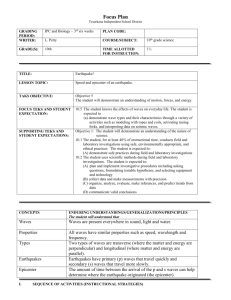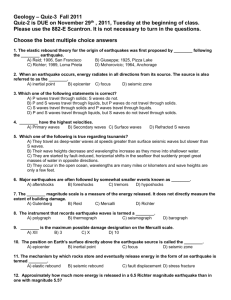Earthquake Quiz: Test Your Knowledge!
advertisement
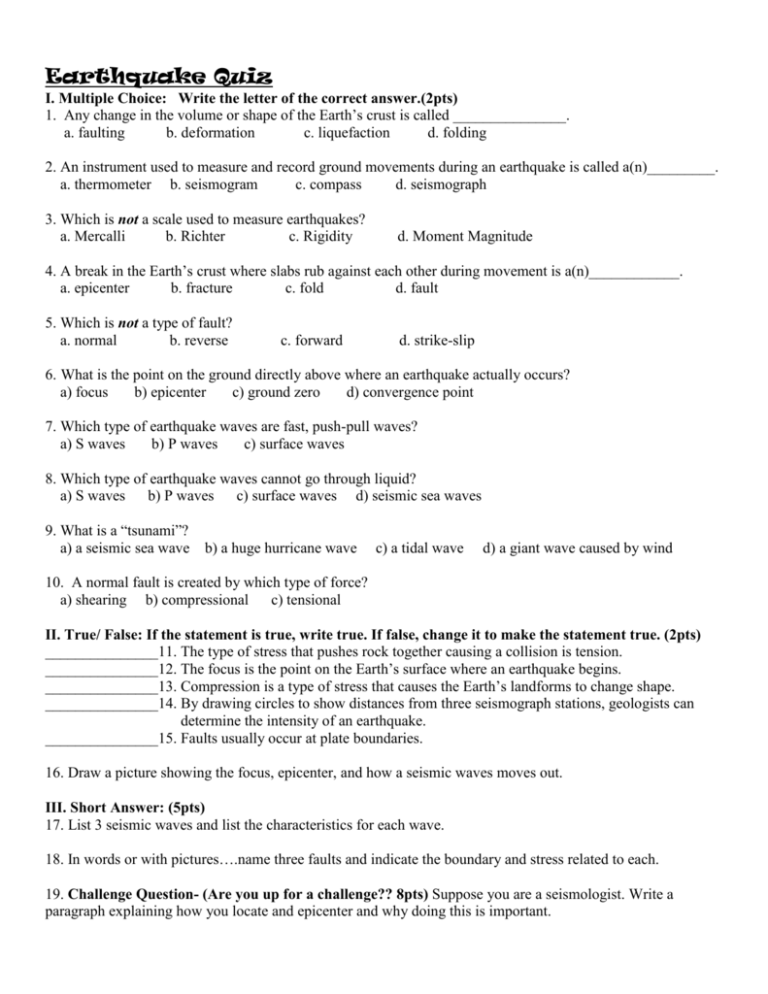
Earthquake Quiz I. Multiple Choice: Write the letter of the correct answer.(2pts) 1. Any change in the volume or shape of the Earth’s crust is called _______________. a. faulting b. deformation c. liquefaction d. folding 2. An instrument used to measure and record ground movements during an earthquake is called a(n)_________. a. thermometer b. seismogram c. compass d. seismograph 3. Which is not a scale used to measure earthquakes? a. Mercalli b. Richter c. Rigidity d. Moment Magnitude 4. A break in the Earth’s crust where slabs rub against each other during movement is a(n)____________. a. epicenter b. fracture c. fold d. fault 5. Which is not a type of fault? a. normal b. reverse c. forward d. strike-slip 6. What is the point on the ground directly above where an earthquake actually occurs? a) focus b) epicenter c) ground zero d) convergence point 7. Which type of earthquake waves are fast, push-pull waves? a) S waves b) P waves c) surface waves 8. Which type of earthquake waves cannot go through liquid? a) S waves b) P waves c) surface waves d) seismic sea waves 9. What is a “tsunami”? a) a seismic sea wave b) a huge hurricane wave c) a tidal wave d) a giant wave caused by wind 10. A normal fault is created by which type of force? a) shearing b) compressional c) tensional II. True/ False: If the statement is true, write true. If false, change it to make the statement true. (2pts) _______________11. The type of stress that pushes rock together causing a collision is tension. _______________12. The focus is the point on the Earth’s surface where an earthquake begins. _______________13. Compression is a type of stress that causes the Earth’s landforms to change shape. _______________14. By drawing circles to show distances from three seismograph stations, geologists can determine the intensity of an earthquake. _______________15. Faults usually occur at plate boundaries. 16. Draw a picture showing the focus, epicenter, and how a seismic waves moves out. III. Short Answer: (5pts) 17. List 3 seismic waves and list the characteristics for each wave. 18. In words or with pictures….name three faults and indicate the boundary and stress related to each. 19. Challenge Question- (Are you up for a challenge?? 8pts) Suppose you are a seismologist. Write a paragraph explaining how you locate and epicenter and why doing this is important.


